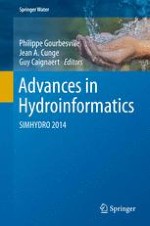2016 | OriginalPaper | Buchkapitel
2D Modelling of the Rhone River Between Arles and the Sea in the Frame of the Flood Prevention Plan
verfasst von : Fabienne Scerri, Christophe Lescoulier, Camille Boudong, Caroline Hémain
Erschienen in: Advances in Hydroinformatics
Verlag: Springer Singapore
Aktivieren Sie unsere intelligente Suche, um passende Fachinhalte oder Patente zu finden.
Wählen Sie Textabschnitte aus um mit Künstlicher Intelligenz passenden Patente zu finden. powered by
Markieren Sie Textabschnitte, um KI-gestützt weitere passende Inhalte zu finden. powered by
